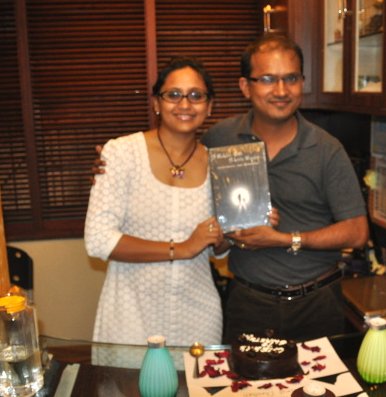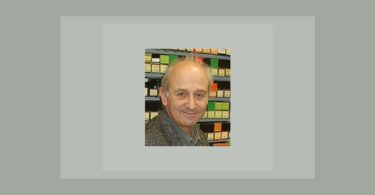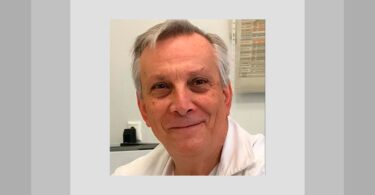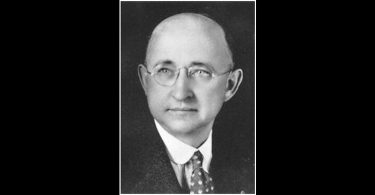Part 2: The Scientifically Intuitive Case Witnessing Process the further journey
RD: In the first part we spoke about the significance and evolution of the individualistic expression at the holistic level. How has the journey of the scientifically intuitive case witnessing process progressed further?
Dinesh: Yes, in any science we see evolution, so also the scientifically intuitive case witnessing process earlier which I applied in my normal cases. I started applying the 3 steps children cases as well, infact it is through the child centric case witnessing process that my understanding of the 3 steps enhanced further. As the child’s energy is pure and with minimum defenses, the journey through the 3 steps helps you to easily reach the similimum.
(For further details refer to Dr. Dinesh Chauhan’s book “A Wander with a little Wonder” – The Child Centric Case Witnessing Process”
RD: Previously you mentioned “what is true for one part of the system is true for all other parts of the system”. Then what about cases like non-verbal cases, cases with deep irreversible pathologies, pathologic cases, cancer cases, geriatric cases, cases of loosing memory (merge with geriatric) coma cases, etc.
Dinesh: Yes, the same questions remained with me for a long time. As I started getting these kinds of cases, my technique refined further, like in non-verbal cases, especially in children who haven’t developed speech, in children with pathological conditions like cerebral palsy, MR, autistic children, in such cases I would concentrate on 5 areas:
- Physicians observation
- Parents observation
- Mother’s History during pregnancy
- Physicians examination findings
- A pattern that is running through and through
In such cases these 5 points prove of utmost importance. The peculiar expressions which come up spontaneously and naturally in two or more than two areas from these five areas, will be nothing but the individualistic expression at the holistic level. This will be considered highest in the totality, as this will be that expression which is running through and through, and the other peculiar expressions will be placed accordingly in the hierarchy of the totality of symptoms.
RD: What is the significance of concentrating on not only a single point but these 5 points together?
Dinesh: If we take only any one of these points into consideration it would give us a one sided picture. If we consider only the physicians observation then it would be his opinion. If it is the parents observation only, then chances of it being biased are high, or it will be only their side of the story. Therefore if we concentrate on getting a pattern which we observe is common and running through and through in everybody’s observation in more than 2 areas, then chances of going wrong will be less and chances of getting peculiar symptoms higher, chances of getting a holistic picture will be higher, or chances of getting individualistic expression at the holistic level higher, and chances of reaching the correct remedy will also be higher!
All these taken together form the totality of symptoms which leads me to the appropriate similimum. Thus the individualistic, holistic pattern can be perceived; and the confluence of the thematic understanding, the rubrics, and the Materia – Medica presents the similimum to me.
RD: Here you differ from the conventional 3 steps of the case witnessing process, which is the passive, active, and active-active?
Dinesh: Yes Rina, in such cases I will have to break the barrier of following in a certain fixed pattern the passive, active and active-active. Rather I use the same 3 steps in a more enhanced manner. These 5 points act like 5 different areas in the patient, so I become active and explore the 5 areas, find the common thread running through and through and then become active-active and explore the individualistic holistic expression in search for the similimum. It is applying the same principles in a modified manner to suit the case.

Dinesh: Again, in such cases also we cannot rely only on any one area; in such cases also I explore many areas, like:
1) Physician’s observations
2) Relatives’ observation
3) State or words of the patient (verbatim) before he went into coma
4) Past history by the relatives,
And that peculiar expression which is running through and through will bring us to the individualistic holistic expression.
RD: Could you elaborate on the state of the patient before he went into the state of coma?
Dinesh: I knew that question was coming Rina!! If you understand the whole condition of coma, before going into this deep comatose state, the entire state of the patient would be aggravated, and it will be right on the surface, like an acute situation or an acute disease condition. Due to the suddenness and intensity of the whole acute disease, there is an acute aggravation of the whole altered pattern of the patient, and hence without any defenses the disturbed state is right in front of us. Similarly just imagine how disturbed or aggravated the state of the patient must be before going into such a deep pathology or comatose condition. Hence patients last words or gestures or state “AS IT IS” expressed by him or her before going into the state of coma would also give us an important clue to his similimum.
RD: A very valid point indeed. With such deep pathologies, one really wonders how to prescribe in such cases. Naturally the next question that comes to my mind is, how do you apply the case witnessing process in deep irreversible pathologies like cancers?
Dinesh: The very nature of such irreversible diseases like cancers is such that one is overpowered by the whole disease condition. It affects the psyche of the patient to such an extent that it creates its own impression on the patient.
If you understand the irreversible disease conditions, they can be divided broadly into 2 categories, one type is where there is degeneration of tissues and cells, while in other there is uncontrolled proliferation of abnormal cells. Either the destructive degeneration or the uncontrolled proliferation which is the pathophysiology of such cases, gives rise to specific symptomatology which is expressed by the patients.
In diseases like cancer, where there is uncontrolled proliferation, the altered cells, though arising from the normal tissues, represent an altered pattern at the local level too. Also the pace of the growth of these mutant cells is extremely rapid –growing at such an alarming speed the tumour carries a distinct energy within itself. In fact, as the magnitude of these rapidly growing altered cells increases, their unique characteristic energy creates a superimposed state on the individual. So the patient’s central disturbance leads up to this disease, but the disease itself produces a corresponding and definitive disturbance on the patient, which can be termed as the “PRESENT PREDOMINANT PATHOLOGICAL STATE”.
So when an individual suffering with cancer comes to me for his interview, he will express his state through the smokescreen of this Present Predominant Pathological State, making it difficult for me to get the original altered state, as the whole disease state itself is so dominant in the patient. In such cases, the whole organism is under severe strain, so along with the present predominating changes, the innate holistic state of the individual is also aggravated. Hence giving only the remedy based on the Present Predominant Pathological State will not help sufficiently and there is a need for bringing in an individualistic holistic approach here as well to deal with the present predominant state.
RD: You mean there would be 2 distinct states in a patient with such irreversible pathologies, one the constitutional state and other the pathological state? Are you are suggesting 2 remedies?
Dinesh: This is not going against the true classical homeopathy. You know for example that during pregnancy, the mother experiences certain sensations, emotions etc. which they have never experienced before. Their state is different from their normal state. This is nothing but actually the state of the child inside; it is a different state from her own state, but this doesn’t mean her own state is suppressed. Actually both these states are running parallel to each other; a new state is expressing itself. Here the child’s state is expressing itself through the mother…like the two states are running parallel to each other.
Similarly imagine an external strong situation outside, like the 9/11 disaster or the Tsunami which affected the masses. The sudden impact of the strong situation shook everybody experiencing the catastrophic situation. It left a deep impact on even those whose susceptibility was normal, hence the external strong situation caused its impression on them. The people affected by this strong external situation suffered from a strong external state different from their own state. Even if the susceptibility is normal they suffer from this external situation which has caused an impression on them. Therefore we see 2 states running parallel to each other; one is the constitutional state, and other is a present pathological state.
So here I am saying that instead of giving 2 remedies based on a protocol, like some physicians give 2 remedies, one which is like an organ specific or pathological remedy and other one is the constitutional remedy, there is no protocol as such here. We explore both the states completely, the pathological and patient’s constitutional state and give the remedy on the state which is predominantly running right now. That is why the case witnessing process becomes all the more important. As we explore both the states in the patient, we see what the patient is putting in the centre, which is troubling him the most, and accordingly prescribe, according to what the patient has kept in the centre. We decide whether to give 2 remedies or a single remedy.
RD: This indeed is a new outlook to irreversible pathologies that makes sense. Now that we are talking about such cases, what about failure cases, or cases in which the remedy hasn’t acted well?
Dinesh: To call a case a failure, I first would question myself about how would that be termed as a failure case. There are cases which haven’t improved at all mentally, physically, or holistically and I see no shift in the patient after 2-3 months of the treatment, or the remedy has acted partially and the improvement comes to a standstill and in one sided cases, where focus had come in only one area, that is it is not a holistic focus, and I am not sure of the remedy, etc. Such cases usually I consider for reassessment.
RD: While doing reassessment in such case, how do you use these basic 3 steps differently, as you already have spoken to him first and you will again be taking his reassessment or retake. How would you be sure that this time you are correct or this time you have understood him correctly?
Dinesh: That’s the same question I asked myself, so the first step of the case witnessing process would be long. I would take a long passive, so my interpretation, my earlier case understanding doesn’t come in place, a long guided passive, wherein I explore all subconscious areas, especially childhood, childhood memories, childhood fears, childhood dreams, incidences which had a deep impact on the person as a child, so I make sure that I get the correct information, and do not miss any area where the focus comes up. Again even if I get a common thread running through will wait for it to come up in different areas, will confirm be 100 percent sure about it, and wait for it in other areas, as well.
In the second step which I call the passive guided, I will explore the previous history of the patient; here too I will explore only the passive part of the previous interview, as it would be that part of the previous interview which has come spontaneously from the patient and I haven’t put my words or my questions in between, so I will explore all the areas of the passive part of the previous interview to again find out the focus or that individualistic holistic expression, after being sure of the focus would become active and active-active to complete the case.
RD: Wouldn’t this prolong the time of case taking as we are waiting for a long time in the passive itself?
Dinesh: I have no choice here. I need to be sure to obtain the holistic expression, here too. I don’t depend only on the mind areas or the mental general expressions, but I make sure that there is a definite mind and body connection, especially in physical particulars, physical generals, mental generals, to see if they are connected to the focus; then I would be doubly sure of the focus. This is indeed a very important part of the evolution of the case witnessing process that I have observed in recent times, to obtain the mind and body connection, which drastically has reduced the chances of going wrong in my search for the similimum.
RD: You are talking about perceiving the individualistic expression at the holistic level in all cases, but what about those cases especially in one sided mental cases, or where the patient is in touch with only the physical or the mental complaints as in psychiatric cases?
Dinesh: A very valid question indeed. The same thing would trouble me when you asked me this, because in one sided cases, the patient is stuck at the local level, and all his description revolves around the same local disease phenomenon. So here I have no choice but to collect all the signs and symptoms at this local level; here I will understand the location, sensation, modalities, concomitants at this local level completely. I will completely explore this local side, and prescribe at this local level only for the time being. But while doing this I will keep in mind that every time the patient comes for a follow up I will make sure that I explore different areas of his life, and make note of the peculiar expressions in those areas, and after every follow up I will observe the thread which is running through and through in all the different areas which I have explored in the follow ups, this will bring in front of me the individualistic expression at the holistic level.
RD: How will you prescribe when the holistic picture is not available?
Dinesh: Definitely it would be difficult to prescribe when the complete picture is not available, but having said that, what I do in such cases is whatever is available. I would prescribe on that. In my mind I would know that I have prescribed on this level but I would keep in mind that every time the patient comes for a follow up I will explore each area till I reach the individualistic holistic centre of the patient.
RD: Indeed this was a lot of brain storming, for one interview to cover a whole array of possible different cases. With this we really await to learn in-depth about all the above concepts and many more, through your upcoming book of the advance case witnessing process (temporary title) and let’s see what awaits us in the further part of the interview.





